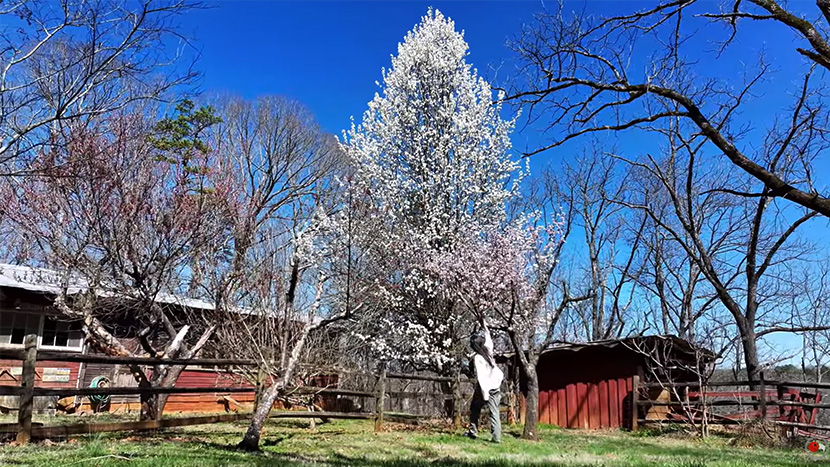Bradford Pears Are Pretty… Awful
In spring across large parts of the USA, a tree with bright white flowers goes into bloom – but these beautiful blooms have a dark secret. First, you would expect such bright delicate flowers to smell quite lovely, but with the Bradford pear, you would be unpleasantly surprised! Second, this tree is invasive and destructive to native plants, causing it to now be banned in many states.
What is a Bradford Pear Tree?
These trees – known as Bradford or Callery pears (Pyrus calleryana) – are in the Rosaceae family, the same one that contains apples and plums. They grow tall quickly and bloom very early in spring, which makes them easy to identify, and made them very popular for city planners. Brought over from Vietnam and China in the 1960s and promoted as the perfect tree to line roadways, it quickly spread – but there are multiple problems with this.
Why is The Bradford Pear Tree Bad?
First, the flowers smell quite bad – some people say fishy and others even say it smells like semen. They produce this odd smell because they are actually pollinated by flies instead of bees. Second, in the plant world, growing quickly often also means that the trees are short lived – so they will need to be replaced more often. Third, and most importantly, these fast growing trees spread quickly and outcompete other great native plants.
You see, this ornamental tree that was supposedly sterile and not able to spread on its own, was able to quickly hybridize and soon became viable. Once this happened, the seeds were quickly spread far and wide by birds. Since this exotic tree has no natural enemies it began to paint the landscape with its white – very stinky – flowers. Having few natural enemies and growing quickly gave the Bradford pear an advantage, allowing it to outcompete plants that are native to an area. When exotic plants begin to replace native ones, it can cause problems for the entire ecosystem, from insects, to birds, and all the way to us! For this reason, we need to slow the spread of invasive plants like the Callery pear.
What Should We Do?
Luckily, a movement is taking place to restore native plants in our cities, and everyone can be a part of it. Choosing to plant native trees, shrubs, and more in your garden (or even on pots on your balcony) can make a huge difference in protecting biodiversity in our own backyards. Though cutting down a tree might always seem sad, getting rid of Bradford Pear trees and replacing them with native trees and/or shrubs is a great thing to do. And there is no need to worry, because there are plenty of options for beautiful native plants in your area, just ask your local botanical garden or horticultural society!
Once native plants are restored in an area, we give better chances to wildlife in the city. Which, despite what many people might think, can be really diverse! Restoring native plants in our cities is a great way for us to reconnect to nature and make it more accessible to everyone, and getting rid of Bradford Pears in order to replace them with something native to your area is a great start.

































































































